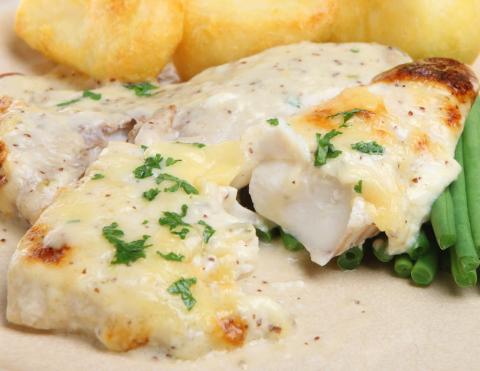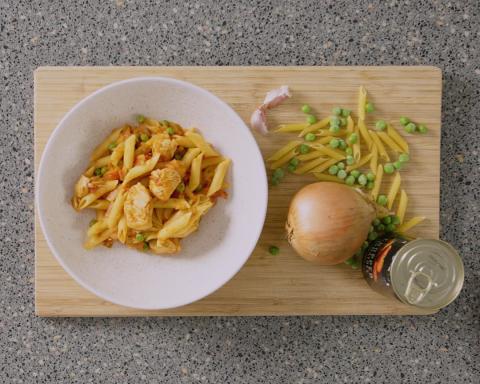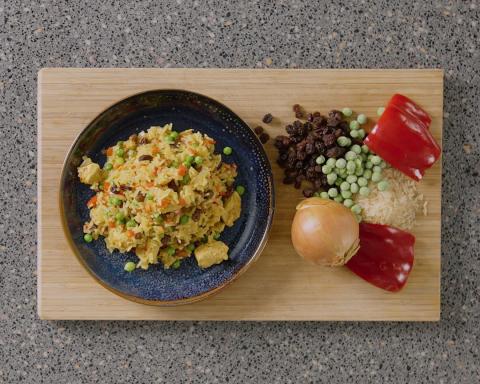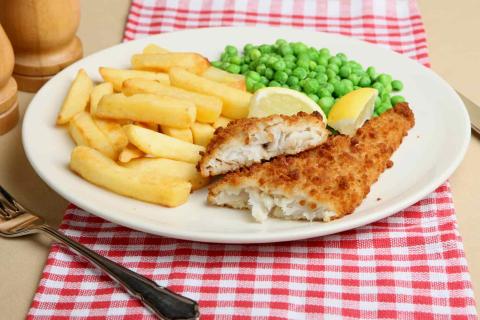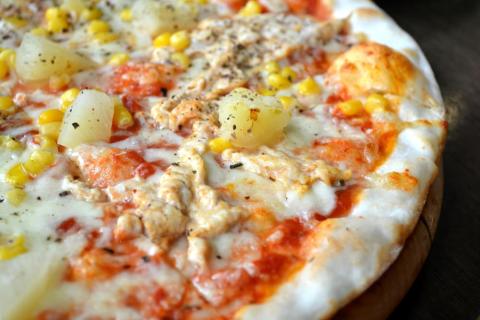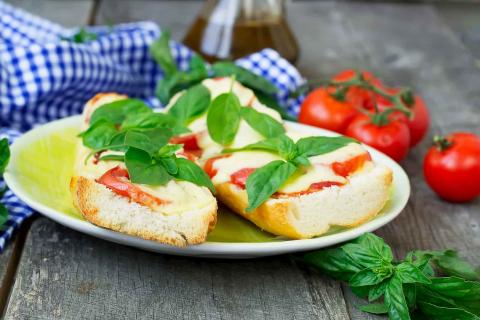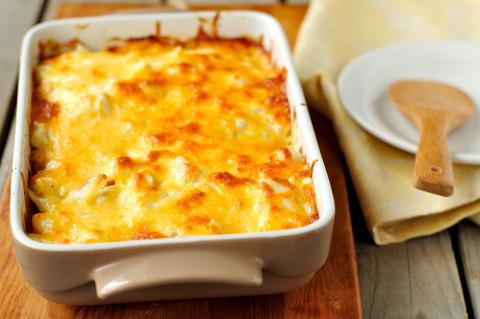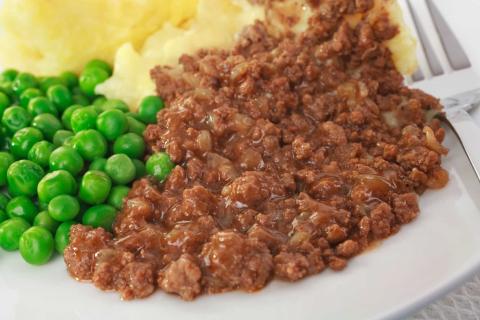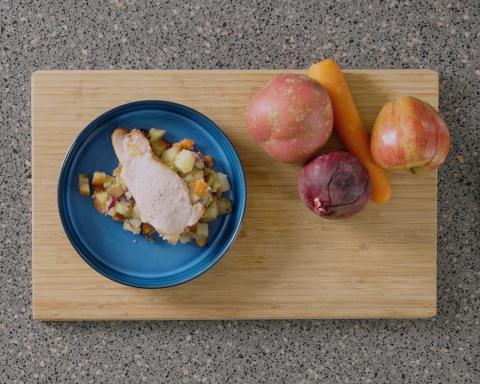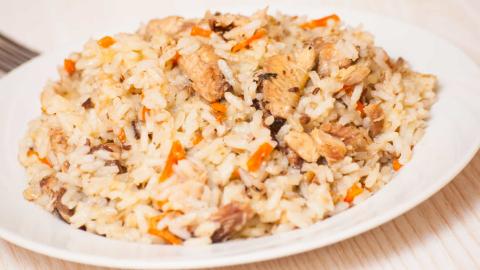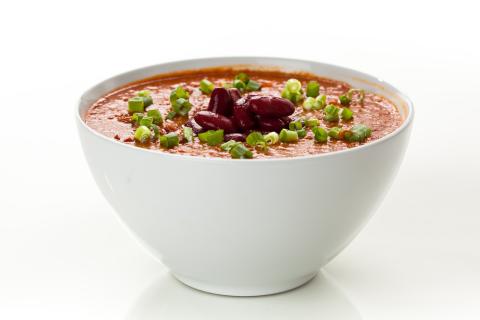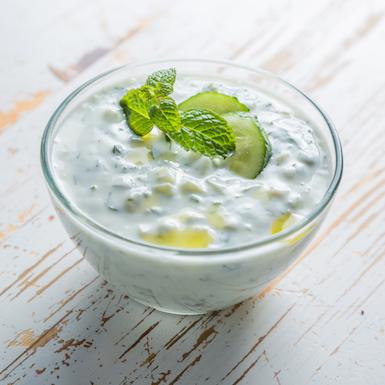- 10 Tablespoons (300g) Couscous
- 1 (7g) Vegetable Stock Cube (use reduced salt whenever possible)
- Boiling (350ml) Boiling Water
- 1 Tablespoon (10g) Vegetable Oil
- 1 Medium (150g) Onion
- 2 (6g) Garlic Cloves or 1 Teaspoon (5g) Garlic Puree
- 2 Large (300g) Courgettes
- 16 (240g) Cherry Tomatoes
- 1 Tin (240g) Chickpeas in Unsalted Water, Drained
- Juice of 1 Lemon
Ingredients
Allergy Disclaimer
Always check the label of each ingredient for allergy warnings.
Method
- Dissolve the stock cube in a heat proof bowl or jug of boiling water.
- Add the couscous to the bowl and cover the bowl with a plate or cling film and allow to sit for 5-10 minutes.
- Peel and chop the onion and garlic. Wash the courgettes and tomatoes. Chop the tomatoes in half and chop the courgettes into bite-size pieces.
- Heat the oil in a saucepan over a medium heat.
- Add the onion and garlic and cook for 2 minutes.
- Add the courgettes, tomatoes and chickpeas and cook until vegetables are soft whilst stirring every so often.
- When the couscous has soaked up all of the water, add the vegetables and lemon juice. Mix together and serve.
Cost Saver Tips
This dish is a great use of leftover vegetables. Any raw tomatoes could be used but they may need to be cut into smaller pieces depending on size.
Tips for Kids
Choose your child’s favourite vegetables to add to the couscous.
Nutritional Information
Based on a single serving of 368g (% of an adult's reference intake)
Energy
421 kcals ( 21 %)
1,790 kJ ( 21 %)
Fat
0.7 g ( 5 %)
Saturates
79.7 g ( %)
Sugar
7.8 g ( 9 %)
Salt
1 g ( 17 %)
Detailed nutritional information
| Per 100g | Per 368g serving | |
|---|---|---|
| Energy Kcals | 114 | 421 |
| Energy Kj | 487 | 1,790 |
| Protein | 4.8 g | 17.8 g |
| Total Fat | g | g |
| Saturated Fat | 0.2 g | 0.7 g |
| Carbohydrates | 21.7 g | 79.7 g |
| Total Sugars | 2.1 g | 7.8 g |
| NSP Fibre | 2.1 g | 7.8 g |
| Sodium | 104 mg | 384 mg |
| Salt | 0.3 g | 1 g |
Find out about nutritional labelling
Nutrition labels on the front of packaging
- Most of the big supermarkets and many food manufacturers display nutritional information on the front of pre-packed food.
- Front of pack nutrition labels provide information on the number of grams of fat, saturated fat, sugars and salt and the amount of energy (in kJ and kcal) in a serving or portion of a recipe.
- The labels also include information about reference intakes (expressed as a percentage) which are guidelines about the approximate amount of particular nutrients and energy required for a healthy diet.
- The colour coding tells you at a glance if the food has high (red), medium (amber) or low (green) amounts of fat, saturated fat, sugars and salt.
- The more greens on the label, the healthier the choice
- Amber means neither high nor low, so you can eat foods with all or mostly ambers on the label most of the time.
- Reds on the label means the food is high in that nutrient and these are the foods we should cut down on. Try to eat these foods less often and in small amounts.
Food shopping tips
If you’re trying to decide which product to choose, check to see if there's a nutrition label on the front of the pack. This will help you to quickly assess how your choices stack up. You will often find a mixture of red, amber and green colour coding for the nutrients. So when you're choosing between similar products, try to go for more greens and ambers and fewer reds if you want to make a healthier choice.
 Activities & Play
Activities & Play Behaviour
Behaviour Childcare
Childcare Development & Growing Up
Development & Growing Up Family, Friends & Relationships
Family, Friends & Relationships Feeding Your Baby
Feeding Your Baby Food & Eating
Food & Eating Health & Safety
Health & Safety Mental Health & Wellbeing
Mental Health & Wellbeing Money & Work
Money & Work Online Behaviour & Safety
Online Behaviour & Safety Pregnancy & First Days
Pregnancy & First Days School & Education
School & Education Sleep
Sleep














